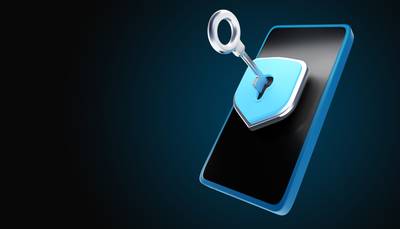Why is website security important to every user?
Appropriate website security not only protects against potential attacks by cybercriminals, but also builds user trust, which is essential for any online activity. A secure website is one that provides protection against various types of attacks, such as phishing, SQL injection, cross-site scripting (XSS), and man-in-the-middle (MitM) attacks.
Implementing solid security measures such as SSL certificates, regular software updates, and strong authentication mechanisms help prevent data breaches that can lead to reputational damage, financial penalties, and even serious legal consequences.
In the context of SEO, website security also affects its visibility in search engines. Google and other search engines prefer sites that offer a secure connection (HTTPS), considering them more reliable. This means that investing in website security not only protects its users, but also improves its positioning, which translates into greater visibility and potentially higher traffic.
Therefore, website security is not only a technical issue, but also an element of building trust and credibility in the eyes of users and search engines.
How do hackers take control of websites?

Common attack methods and how to defend against them
Hackers use a variety of techniques to take control of websites. Understanding these methods and using the appropriate defenses is crucial to ensuring the security of your site. Here are the most common attack strategies and how you can protect yourself against them:
- Brute-force attacks: These attacks attempt to guess a website's password by automatically testing many combinations. To avoid them, use strong, complex passwords and enable two-step verification.
- SQL Injection: Hackers inject malicious SQL code into forms on a website to manipulate the database. If you want to stay secure, use hardcoded procedures and input validation to prevent code injection. However, if you are not a technical person, just use a CMS system for your website. The developers have most likely thought this through for you.
- Cross-site scripting: XSS attacks allow malicious script to be injected into the content of a website, which is then displayed to other users. If you do not want content to be posted on your website without your consent, use Content Security Policy (CSP) and validate and disinfect all input data.
- DDoS (Distributed Denial of Service): DDoS involves flooding a website with a huge number of requests in order to block it. If you don't want your website to be inaccessible due to too many bots, use DDoS protection services that can recognize and filter traffic.
- Phishing and spoofing: Hackers create fake websites or emails that imitate trusted sources to obtain information. For this reason, educate your users not to click on suspicious links or provide data on unknown sites.
- Software vulnerabilities: Outdated software may contain vulnerabilities that hackers can break into. Regularly update all website components, including CMS, plugins and scripts, and you will minimize the risk of attacks due to outdated tools.
Taking these security measures can significantly reduce the risk of an attack on your website. Remember that there is no room for complacency in cybersecurity. Constantly monitor your site, stay up to date with new threats and apply security best practices.
Installing an SSL certificate
What is SSL and how does it affect the security of your website
SSL (Secure Sockets Layer) is a security technology that enables encrypted communication between a web browser and a website server. An SSL certificate ensures that all data sent between the user and the server is encrypted, making it much more difficult for hackers to access sensitive information such as login details, credit card numbers, and personal information. In an environment where phishing and other phishing attacks are commonplace, SSL is the first line of defense against cyber threats.
How SSL affects SEO and website visibility
Google has confirmed that the use of HTTPS (where the "S" stands for a secure connection provided by SSL) is a ranking factor in search results. This means that websites secured with an SSL certificate can be positioned higher than those without such protection. Additionally, web browsers like Chrome mark sites without SSL as "unsecure," which can deter users from visiting your site.
Steps to install an SSL certificate
SSL installation begins with selecting the appropriate certificate provider and purchasing a certificate. Then you need to generate a certificate signing request (CSR) on your server, which is usually done through the hosting admin panel. After submitting the CSR to the certificate provider and verifying domain ownership, you will receive an SSL certificate for installation on the server.
It is important that after installing an SSL certificate, you ensure that all site content is accessible via HTTPS, which includes updating internal links, external resources, and redirects, to avoid mixed content warnings.
Using Anti-Malware Software
1. Choosing Antimalware Software
When choosing antimalware software, consider the following criteria:
- Detection Performance: Look for software with high malware detection performance, proven by independent testing.
- Real-Time Updates: Choose a solution that offers real-time updates to ensure protection against the latest threats.
- Minimal System Impact: Optimal antimalware software should provide effective protection without significantly burdening system performance.
- Functionality: Make sure the software you choose offers features that meet your needs, e.g. on-demand scanning, real-time protection, phishing prevention.
2. Installation and Configuration
After selecting the appropriate antimalware software, it must be installed and configured correctly:
- Install the Software: Follow the installation instructions to ensure the software is properly deployed to your device.
- Update the Pattern Database: Update the virus signature database immediately after installation. This is crucial for recognizing the latest threats.
- Set up Scheduled Scan: Set up regular system scans to automatically detect and remove malware.
- Enable Real-Time Protection: Activate this feature to have the software monitor your system on an ongoing basis and block threats as they are detected.
3. Regular Updates and Monitoring
- Update Regularly: Regular updates to your antimalware software and operating system are crucial to maintaining optimal protection.
- Monitor Security Alerts: Pay attention to antimalware alerts and notifications to quickly respond to detected threats.
4. Education and Awareness
- Cyber Security Training: Regularly educate yourself and your employees about the latest security threats and best practices.
Remember that antimalware software is only one part of a cybersecurity strategy. Always take a multi-layered approach to security, combining it with other tools and practices such as firewalls, password management and security training to ensure comprehensive protection against cyber threats.
Manually accepting comments on the page

The importance of user content moderation
Comment moderation is an important element of content management on your website, which has a direct impact on its security, reputation and positioning in search engines. Manually accepting comments allows you to control what content appears on your site, ensuring it aligns with your site's profile and values. Here's why this is so important:
- Spam and Malicious Content Filtering: Automated comment posting tools are often used to spread spam or malware. Manual moderation allows you to catch and remove such entries before they are published, which protects your website from being a source of unwanted content.
- Ensuring Discussion Quality: Comments are an important element of building a community around your site. By controlling which ones get published, you can ensure that the discussion stays on-topic and high-quality. This, in turn, attracts more engaged users and improves the visitor experience.
- Protection against Attacks and Hate: The Internet is not free from hate and personal attacks. Comment moderation allows you to eliminate such content before it can harm other users or your site's reputation.
- Impact on SEO and Site Perception: Search engines are increasingly paying attention to the quality of user-generated content, including comments. Spam or low-quality content can negatively impact your website's positioning. Moreover, a site full of constructive and topical comments is perceived as more valuable and credible by both users and search engine algorithms.
Implementation of Comment Moderation
To effectively moderate comments, it's a good idea to establish clear rules about what content is acceptable on your site. Informing users about these policies may discourage the posting of inappropriate content. Additionally, consider using moderation tools such as keyword filters and verification systems to help you manage comments effectively.
Remember that comment moderation is not only a protection against negative content, but also a way to build a positive and engaged community around your website. It is an investment in its quality and reputation that can bring long-term benefits both in terms of SEO and the overall perception of the brand on the Internet.
Regular Backups
The Importance of Regular Backups
Regular backups are a key part of any website's security strategy. This is not only protection against data loss due to hardware failure or hacker attack, but also the basis for quickly restoring the functionality of the website. Regular backups allow you to minimize potential data losses, ensuring the continuity of your online business.
Implementation of the Backup Procedure
- Automation: Use backup automation tools. Schedule backups to take place at cyclical intervals, e.g. every day at night, when there is less traffic on the website.
- Backup Diversity: Follow the 3-2-1 rule in backups: keep at least three backup copies of your data on two different media, one of which should be stored off-site (outside the main data storage location).
- Testing and Validation: Regularly test restoring data from backups to ensure that in the event of a failure, the recovery process will run smoothly.
- Backup Security: Protect your backups from unauthorized access by using encryption and strong access and authentication policies.
- Monitoring and Logging: Monitor the backup process to detect any errors or irregularities on an ongoing basis. Logging details of backup operations allows for quick response if problems are detected.
Protection against XSS and injection attacks
Preventing Cross-Site Scripting (XSS) attacks
Cross-Site Scripting (XSS) is one of the most common security threats to web applications. It allows attackers to inject malicious JavaScript code into pages viewed by others. To protect your site from XSS attacks, follow these practices:
- Input Validation and Sanitation: Validate and sanitize all data coming in from forms, URL queries, and any other data sources. Remove or encode special characters that may be interpreted as code.
- Applying a Content Security Policy: CSP allows you to determine where resources on your site can be loaded from, limiting the possibility of executing malicious code.
- Using escape functions for dynamic data: When inserting user data into a page, use escape functions on any dynamic data displayed on the page to prevent it from being interpreted as code.
Defense against injection attacks
Injection attacks allow attackers to inject malicious commands into systems via a web application. These include SQL injection, command injection, and more. To prevent these risks, it is recommended:
- Using Prepared Statements with bound parameters: This is one of the most effective methods of preventing SQL injection attacks. Prepared queries separate the data from the SQL statement code, preventing an attacker from manipulating the queries.
- Input Validation: Validate that your input data meets expected formats. Use lists of allowed values wherever possible and discard any suspicious data.
- Privilege Minimization: Ensure that your web application runs with the minimum privileges necessary to perform its tasks. Limit database access to only necessary operations.
Implementation of Web Application Firewalls (WAF)

Implementing web application firewalls (WAFs) is an important element in securing web applications against a variety of threats and attacks. WAF acts as a protective shield between the web application and incoming traffic by analyzing and filtering dangerous requests. Here's how to effectively implement WAF to increase the security of your web application:
- Choosing the right WAF solution: Start by thoroughly examining available WAF options, including hardware, software, and WAF-as-a-Service solutions. The choice should be tailored to the specifics of your application, performance requirements and budget.
- Configuring and Customizing Policies: The next step is to configure the WAF according to the needs of your application. This includes adjusting filtering policies that determine what types of requests are allowed and which are blocked. Configure policies to protect against common attacks such as SQL injection, cross-site scripting (XSS), and more.
- Testing and tuning: After initial configuration, test the tool to ensure it effectively blocks dangerous requests without negatively impacting application performance. Monitor WAF performance and adjust policies as needed to optimize protection and performance.
- Integration with other security tools: To strengthen protection, it is recommended to integrate WAF with other security tools, such as intrusion detection and prevention systems (IDS/IPS) and log management and security monitoring solutions. This synergy increases the effectiveness of protection against attacks.
- Team training: It is important that team members responsible for security are properly trained in configuring, monitoring, and responding to WAF-related incidents. Regular training and knowledge updates are crucial to maintaining a high level of safety.
- Maintenance and updating: Security is a continuous process. Update your WAF software regularly to protect against newly discovered security vulnerabilities and threats. Stay on top of the latest trends and best practices in web application security as you adapt your security strategies.
WAF implementation is essential to protect web applications against a growing number of threats. By carefully selecting, configuring and integrating WAF with other security tools, you can significantly increase the resistance of your application to attacks, ensuring the security of user data and the continuity of online services.
But remember that you don't have to do it alone. A common solution is to choose WAF services from your hosting provider.
Why cybersecurity is important - case studies
Cybersecurity, a key aspect of protecting data and IT systems against unauthorized access, is crucial for every organization, regardless of its size or industry. The importance of cybersecurity is most evident through case studies that reveal the potential consequences of neglect in this area.
1. Ransomware attack on Colonial Pipeline
In May 2021, Colonial Pipeline, the operator of the largest fuel pipeline in the United States, was the target of a ransomware attack. Cybercriminals blocked access to the company's IT systems, demanding a ransom. This incident resulted in a temporary closure of the pipeline, leading to significant fuel disruptions on the US East Coast, underscoring the importance of protecting critical infrastructure.
2. Personal data leak on Facebook
In 2019, Facebook reported leaking the personal data of millions of users, including phone numbers and profile information. This incident not only violated user privacy, but also damaged the company's reputation and sparked criticism from regulators. This shows how important it is to secure user data and implement effective privacy and security policies.
3. Attack on SolarWinds and the supply chain
In 2020, the popular SolarWinds Orion software was discovered to be infected with malicious code, allowing hackers to access the networks of thousands of organizations around the world, including US government agencies. This supply chain attack highlights the importance of monitoring and securing the entire software supply chain, not just its final products.
These case studies illustrate that cybersecurity is no longer an optional layer of protection, but a fundamental element of every organization's strategy. Ensuring business continuity, protecting personal data and maintaining customer and user trust depends on a proactive approach to cybersecurity, which includes regular security audits, employee training and the implementation of advanced technological solutions
Summary
Appropriate security of a website is essential to defend against attacks and build user trust. Having an SSL certificate, regular software updates, and strong authentication mechanisms are essential to ensure data security. In addition, a secure website has a positive impact on its visibility in search engines, which translates into more internet traffic.
To effectively protect a site, you must use a multi-layered security approach that combines both technical protection measures and user education. Regular backups, manual comment moderation, and installation of anti-malware software are additional security practices. It is also important to consciously monitor and update security measures to counteract new threats and maintain the continuity of website operation.
The solutions listed in this article are just the tip of the mountain of tools that website owners must be aware of if they want to keep their website locked. However, there is always a risk and no one will provide us with website security that cannot be bypassed.
Safety cannot be bought by the piece or by the bucket. It is a continuous process of improving your website.
Frequently asked questions
Does my website need security?
Yes, every website, regardless of its size or industry, requires security. Protecting user data and site content from unauthorized access is crucial to maintaining trust and reputation online.
How can I protect my website against attacks?
Protecting your website from attacks requires a multi-layered approach, including installing SSL certificates, regular software updates, using strong passwords, configuring web application firewalls (WAFs), and educating users about safe online practices.
Is SSL sufficient to protect my website?
An SSL certificate is a fundamental security element that encrypts data sent between the user and the server. However, SSL does not protect against all types of attacks, such as SQL injection and cross-site scripting (XSS), so additional security measures are required.
How often should I update my website software?
Regular software updates are crucial to securing your website as they patch known security vulnerabilities. It is recommended to update software and plug-ins as soon as new versions are available.
What are the most common website security errors that can lead to attacks?
The most common errors are: outdated software, weak passwords, lack of data encryption (no SSL), unsecured user data, and lack of regular backups. Ignoring these aspects can significantly increase the risk of attacks.
Are there tools that can help protect my site?
There are many security tools that can help protect your website, including vulnerability scanners, content management systems (CMS), web application firewalls (WAF), and anti-malware software. Choosing the right tools depends on your specific needs and website structure.
How can I monitor the security of my website?
Website security monitoring can be done using tools such as Google Search Console, which reports on security issues, and specialized real-time security monitoring solutions that can detect and respond to threats on an ongoing basis.

Adam Naworski



